


Leinier Dominguez grabbed the lead in round three and did not falter until getting first place with a 'plus two' performance on Sunday. Rounds four and five finished with all four encounters drawn, while Ian Nepomniachtchi was the sole winner in the final two days of action. The Russian grandmaster bounced back from a subpar start to end up in second place.
Let us recap what went on in the final two rounds.
The draw in this game was interesting, but also was a rather "controlled" one. Presumably, both players know this opening variation very well.
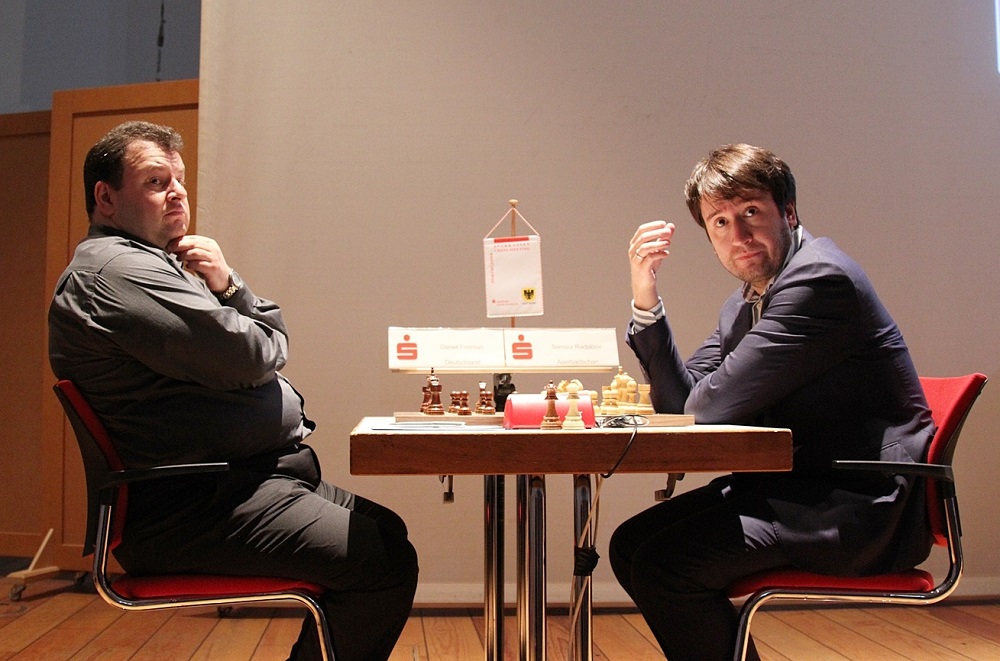
Daniel Fridman and Teimour Radjabov signed a short draw | Photo: Georgios Souleidis
If one of the players starts with a fierce attack right from the get go — especially in a balanced position — this usually is not a particularly dangerous situation from an objective point of view, but in a practical game it can bring about extremely difficult problems. Ian Nepomniachtchi was successful with this strategy: the Russian grandmaster defeated Liviu-Dieter Nisipeanu in just 19 moves.
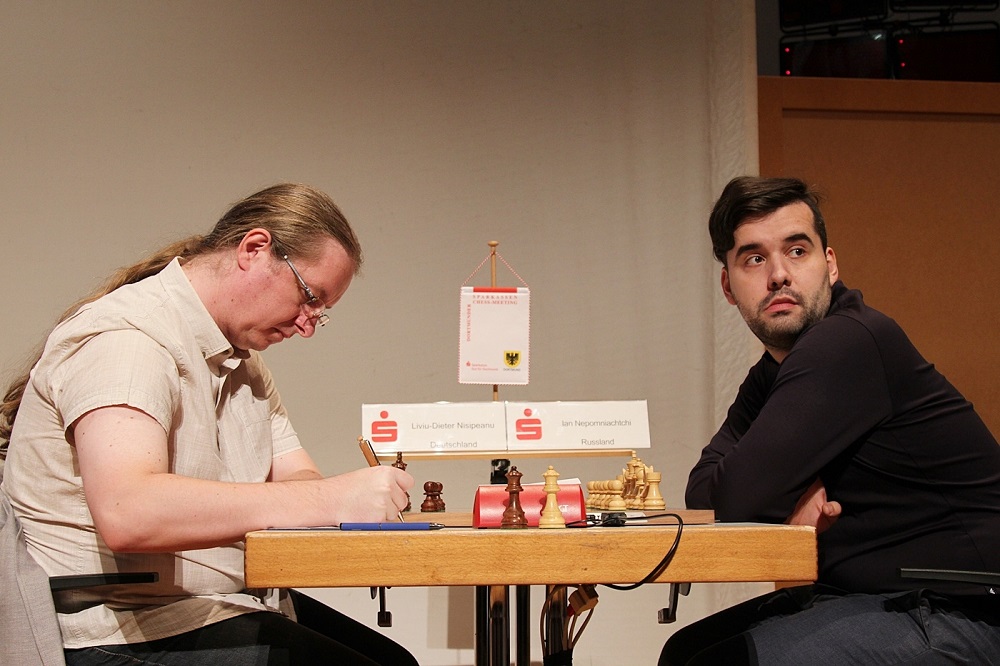
Liviu-Dieter Nisipeanu suffered a kind of "industrial accident" | Photo: Georgios Souleidis
Of course, the group of super-grandmasters in Dortmund tried to beat Estonian Kaido Kulaots at all costs — just because of the big Elo difference. In this sense, this was an interesting study case on tournament tactics, as the super grandmaster took risks and eventually was worse (but not so bad that everything was lost!), while the outsider followed the proverb, "A bird in the hand is worth two in the bush".
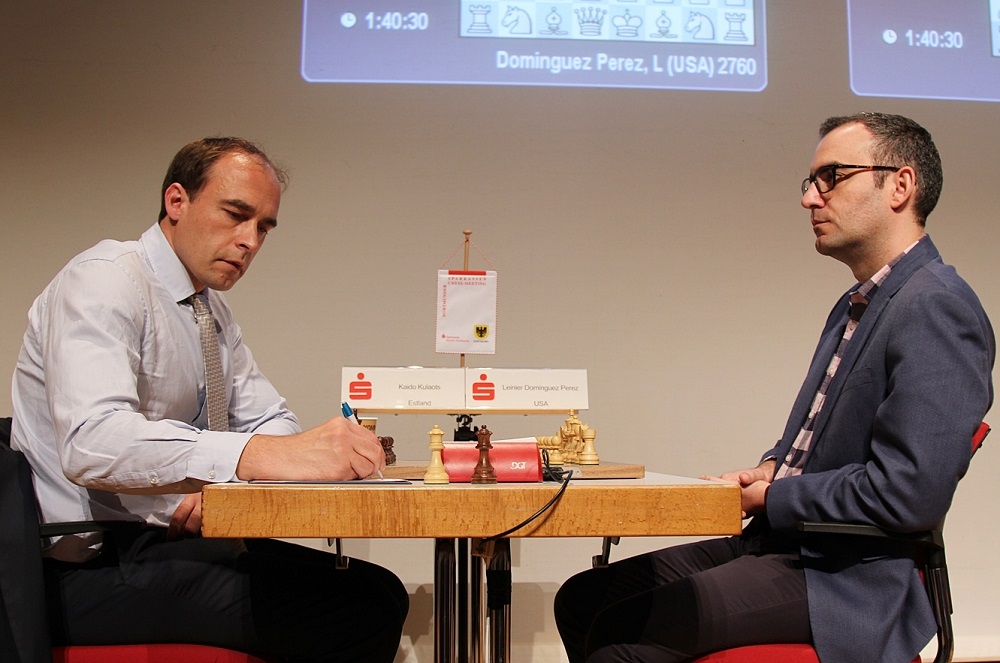
Kulaots showed he has what it takes to draw Dominguez | Photo: Georgios Souleidis
The world-class players did not take risks and were able to remain undefeated in Dortmund.
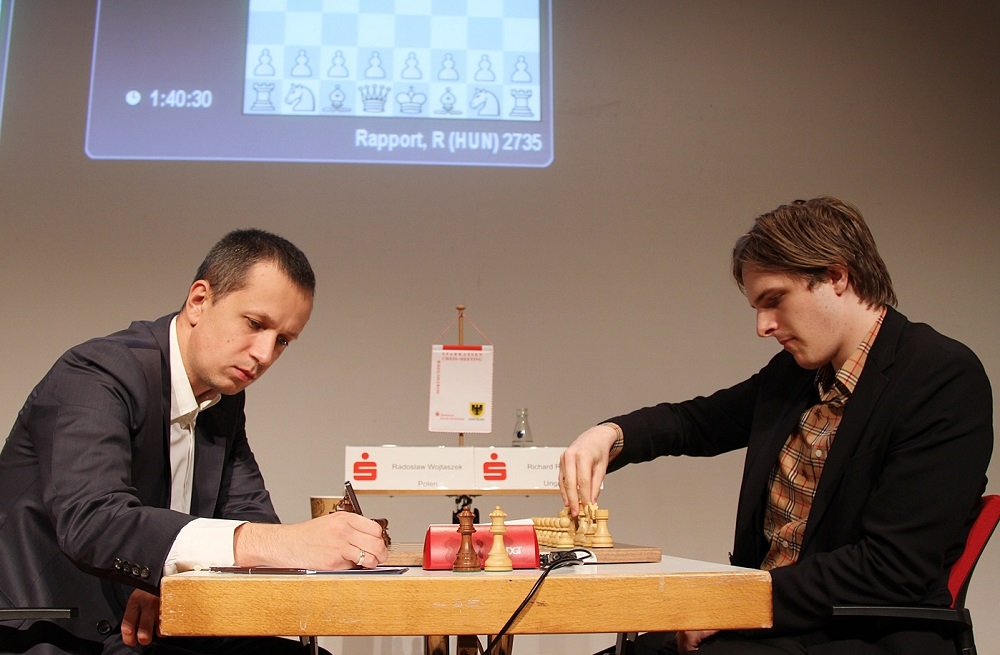
Polish Radoslaw Wojtaszek (left) and Hungarian Richard Rapport | Photo: Georgios Souleidis
Leinier Dominguez Perez was never at risk of losing. Richard Rapport might have caught up with him, but that did not happen: the Hungarian only made a draw. The draw against Wojtaszek handed the newly naturalized US citizen tournament victory.
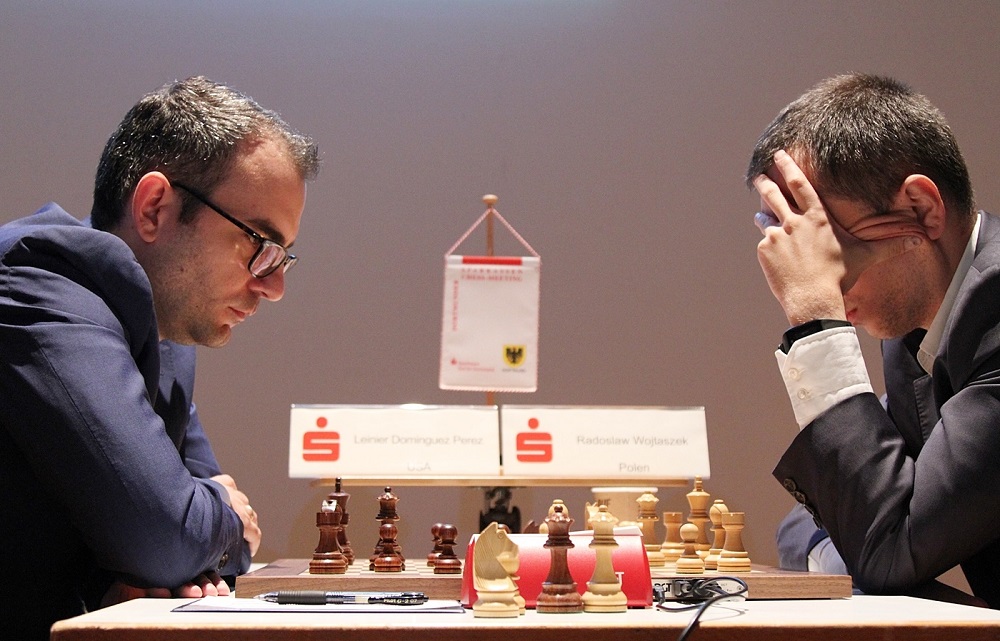
Dominguez kept things under control to win the tournament | Photo: Georgios Souleidis
Richard Rapport had no chances to win against Liviu-Dieter Nisipeanu and thus did not catch up with the tournament leader.

Another draw in the tournament — Rapport and Nisipeanu | Photo: Georgios Souleidis
The players went for one of the best-known variations of the Winawer in the French Defence. The sharp variant has been attracting chess players for decades.
Teimour Radjabov would not have won the event with a victory over Kaido Kulaots, due to his scores in the tiebreak criteria | Photo: Georgios Souleidis
After his dubious start in the tournament, Ian Nepomniachtchi made it to second place! Crucial was his brilliant endgame technique in this game, but the Russian grandmaster was also fortunate to have the best score according to the tiebreak criteria: the higher number of games with Black and the higher number of victories.
Ian Nepomniachtchi finished second | Photo: Georgios Souleidis
Translation from German: Antonio Pereira